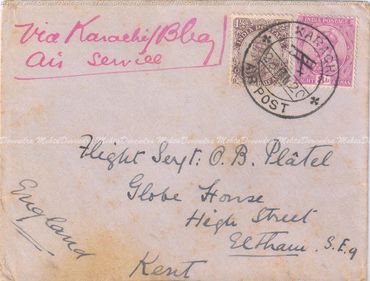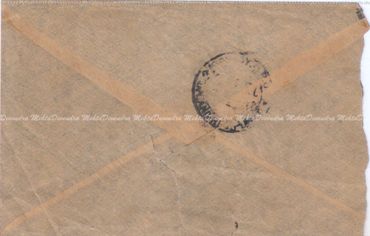The 1920 RAF Flights
The Story
After the 1911 flight, for the next two decades, the centre of Indian aviation and airmail shifted to Karachi in undivided India. In February 1914, an Indian Flying School (also called Central Flying School) was established at Sitapur in United Province (now Uttar Pradesh) under the command of Captain SD Massey of 29th Punjab Regiment. The Indian Army officers who knew flying were posted as flying instructors. The objective was to raise an Indian Flying Corps on the pattern of Royal Flying Corps of England. However, World War I broke out and the officers and aircraft of the Corps were sent to Egypt to supplement the aviation resources of England. Consequently, the Flying School was shut down.
Post the World War I Karachi aerodrome became the gateway to India; Drigh Road Airfield in Karachi was founded in 1920, soon after the Royal Air Force India Command was formed in 1918. The first plane to arrive at Karachi, on December 10, 1918, was the original Handley-Page biplane. Major Maclaren flew the second one from Britain, in the following month with some mail on the flight.
Drigh Road Airfield’s main mission was to receive aircraft in knocked down condition off ships, assemble, test fly and then ferry them to squadrons all over India. Drigh Road was also the birth place of the Indian Air Force, as No.1 Squadron IAF was raised there on 1st April 1933.
As the postal service evolved, faster routes were explored, and experimental airmail services were planned. Thus, detachments of 97 Squadron were sent to Karachi, Bombay and Rajkot, to introduce an aerial mail service, the first of its kind in India. On January 23, 1920, the Royal Air Force commenced a weekly Karachi-Bombay airmail service. That was the first airmail service within India. As was reported 102 years ago:
“Karachi, January 23 — Punctually, at 2 o’clock today, two aeroplanes carrying the first postal mail from Karachi to Bombay started from Mugger Pir aerodrome, a mild south-western wind blowing. But the planes, after manoeuvring, appeared to enter a calm zone at about 10,000 feet. Great interest was taken in the event in the locality and the citizens, representing all races and classes, drove out in vehicles. The flight, according to the planned air route, covers 700 miles. Before the start, the Hon’ble H.M. Commissioner in Sind, who accompanied by his Private Secretary, wished the airmen bon voyage, and among the passengers was Mr. Lupton, C.B.E., Editor of the “Daily Gazette” Karachi, who on the invitation of His Excellency the Governor of Bombay was making the flight. The mail was carried in twelve cases and took the place of bombs carried on war service. The machines, as they moved across the ground, were ‘farewelled’ by visitors from Karachi and by the detachment of the 97th R.A.F. Squadron.”
Mail was collected in Karachi and flown to Rajkot, before being flown on to Bombay during the following day. On the return trip, from Bombay to Karachi, the 97 Squadron aircraft carried both local and English mail, the latter having arrived on the inward bound mail steamer. The operations, however, were terminated in six weeks wherein seven flights were undertaken between Karachi and Bombay, because of heavy losses. (See Gallery below for mails carried on these RAF flights)
Thereafter, 97 Squadron ceased to function and was subsumed into 60 Squadron. The regular airmail service resumed years later, in March 1929, when Imperial Airways commenced operations in Karachi for services to India.
References
Dr. Narendra Yadav, Military aviation and The Indian Air Force, Indian defence Review Issue Vol. 31.3 Jul-Sep 2016, 09 Sep , 2016
Dr. Sohail Ansari, An Aerodrome – a Forgotten Glory, Daily Times, June 29, 2020
Dr. Sohail Ansari, A Brief History of the Subcontinent’s Mail, Dawn, January 30, 2022
http://www.97squadronassociation.co.uk/history.html
Drigh Road Arfield – Biggles Wiki - https://biggles.fandom.com/wiki/Drigh_Road_Airfield

A Gallery of 1920s RAF Flight Covers - The First Flight Southwards (Further on to Kent)


A Gallery of 1920s RAF Flight Covers - The First Flight Southwards


A Gallery of 1920s RAF Flight Covers - The First Flight Northwards


A Gallery of 1920s RAF Flight Covers - the Second flight Southwards


A Gallery of 1920s RAF Flight Covers - the Fifth flight Southwards


A Gallery of 1920s RAF Flight Covers - The Seventh Flight Southwards

